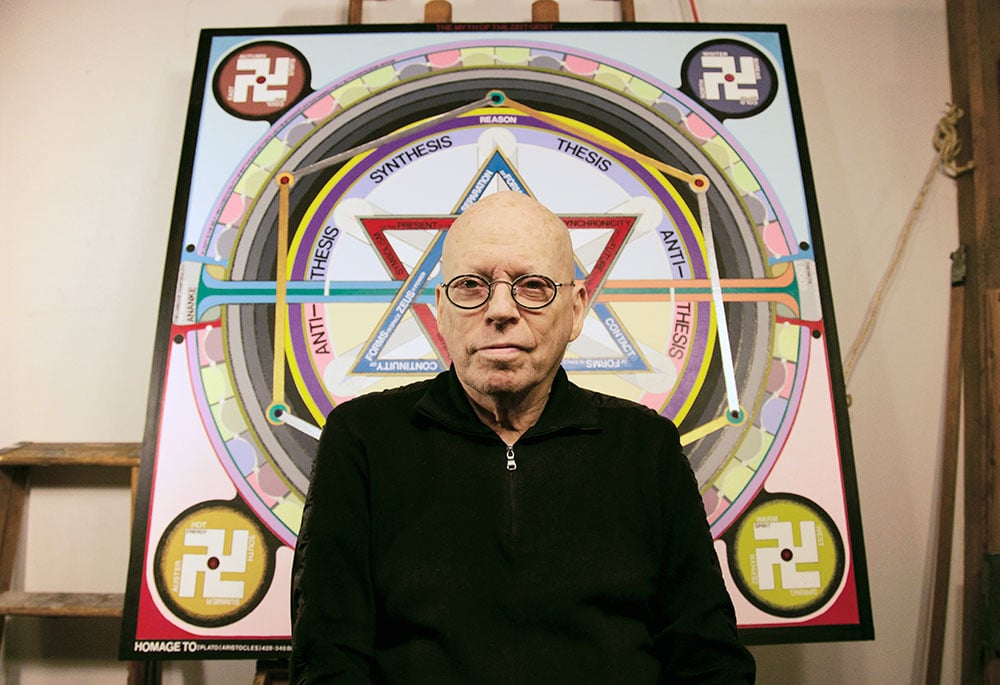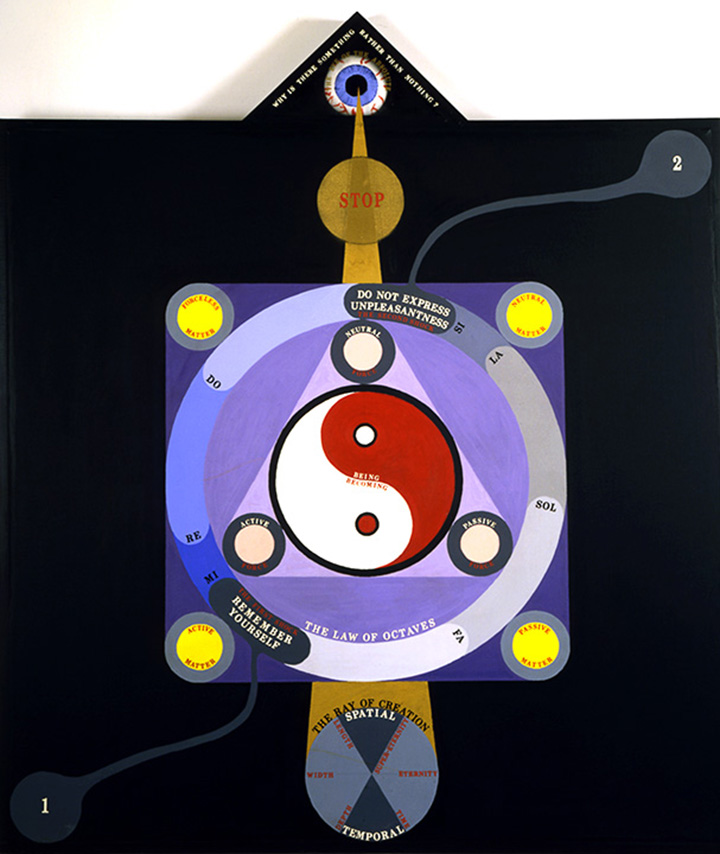Galleries
Visionary Artist and Architect Paul Laffoley Dead at 80
A highly-anticipated book on the artist will debut in March.

A highly-anticipated book on the artist will debut in March.

Cait Munro

Visionary artist and architect Paul Laffoley died on November 16 at age 80 following a battle with congestive heart failure, his gallery Kent Fine Art told Artforum. Laffoley, a Boston native, is best known for his large-scale, mandala-inspired canvases that combine words and imagery to address themes within philosophy, mysticism, science, architecture, and spirituality.
As an undergraduate, Laffoley attended Brown University and later went to the Harvard Graduate School of Design. In 1963, he moved to New York where he worked under artist, designer, and architect Frederick Kiesler and befriended Andy Warhol, who recruited him to watch late-night television for the pop artist. Laffoley reportedly would sit in Warhol’s Harlem apartment from 2 a.m. until dawn, watching a series of TVs Warhol had erected there.
He later spent 18 months working with architect Minoru Yamasaki on designing the World Trade Center towers. After their destruction during the 9/11 attacks in 2001, he was one of the many architects who submitted design proposals for the Freedom Tower.

Paul Laffoley, Why Is There Something, Rather Than Nothing? (1964).
Photo: Kent Fine Art.
Laffoley’s first painting, The Kali-Yuga: The End of the Universe at 424826 A.D. (The Cosmos Falls into the Chaos as the Shakti Ouroboros Leads to the Elimination of all Value Systems by Spectrum Analysis), was completed in 1965 in his parents’ basement. The work shouldered the ambitious task of illustrating the universe.
Despite displaying psychedelic bona fides, the artist was far more intellectually-minded than many of the figures of the ’60s counterculture movement. In a 2009 interview with Wonderland magazine, he recalls Timothy Leary visiting one of his early shows in Boston. He turned to Laffoley and told him, “I like your sense of humor.”
For many years, Laffoley worked in a tiny studio space in Boston that he dubbed the “Boston Visionary Cell.”
While drugs were never Laffoley’s bag, he enjoyed conducting encyclopedic research into everything from extraterrestrial activity and time travel to Buckminster Fuller’s work. He claimed to have seen the 1951 sci-fi film “The Day the Earth Stood Still” over 870 times.
Laffoley’s work was most recently featured shown at this year’s Outsider Art Fair. Several books have been published on his oeuvre, and in March 2016, the University of Chicago Press will release the anticipated book The Essential Paul Laffoley.
“I consider what I do to be like inventions,” he told Wonderland. “An invention can be very quick when you think of it. But the craft of art can go on for a long time.”